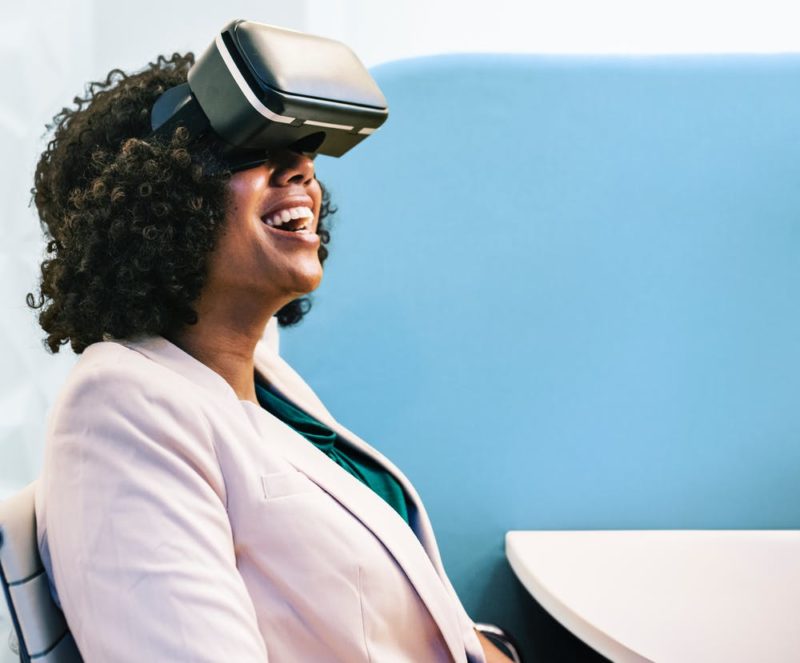Sooner or later, every new tech trend finds its way into language learning. And that’s what’s happening with Virtual Reality (VR) and Augmented Reality (AR). Is VR the future of language learning?
Recently, Hyper Grid Business wrote a review of Mondly’s VR/AR language-learning applications. While they had some positive things to say about the tech, they left out a few key factors about using VR and AR to learn a foreign language. Here’s what you need to know.
VR and AR: What’s the Difference?
Briefly, there needs to be a distinction made between VR and AR. VR is basically an alternative world. You put on your oculus and disappear into a computer-simulated reality. AR is when you use the camera on your phone or tablet to see images imposed into the reality around you (remember back to the Pokemon Go craze).
How Do VR and AR Support Language Learning?
Mondly’s application and others like it create learning experiences for the user by having them navigate the environment using a target language. The apps expose you to new vocabulary words as it listens to and “corrects” your pronunciation with the microphone. Mondly also provides additional in-app resources to support language learning. Combined, it seems like a very solid product. But is it?
How Effective are VR and AR for Language Learning
As we’ll see shortly, applications like the one Mondly offers are nothing new. They’re more of a trend than anything else. And there are several things to worry about if you rely on VR and AR to reach fluency.
Spending money doesn’t guarantee fluency.
It’s a common misbelief that if people spend a lot of money, they’ll “be forced to put in the time” to get a return on their investment. But think about how many treadmills are abandoned in people’s homes. It’s often better to simply take the tie and use discipline to reach fluency on your own.
Speaking in a program won’t help you get over speaking anxiety.
To be fluent, you’ll have to talk to other people. And that can make people nervous. But talking to a computer program won’t change that. You’ll need to first understand how to overcome language learning anxiety. Then, you’ll need to slowly get used to talking to people in the target language.
Computers aren’t the best coaches.
Languages have many dialects. And we don’t always speak the way we were taught. Computers can’t really discern between variations of a language. As a result, you might be corrected for saying something that’s fine among native speakers.

The Importance of Storytelling and Language Learning
While this all sounds cutting edge, VR/AR is more or less just a modified version of the language learning computer games that were popular in the 90s. What’s more, they’re really just a new take on a very old and effective teaching method called Teaching Proficiency through Reading and Storytelling (TPRS).
TPRS can be very effective if it’s done properly because gets the language learners involved with comprehensible input (material that’s challenging enough to be interesting but not too challenging). With TRPS, the instructor serves more as a guide rather than someone to drill and test you on boring grammar and syntax. And you follow that guide along on a journey to understanding both what’s happening in the story and with the language.
It’s a form of Guided Immersion, and it’s one of the main strategies behind OptiLingo’s success. You’ll see better results in your journey to learn a new language if you have a guide standing by to help you along the way.
What’s the Best Way to Learn a Language?
The truth is, you don’t need a lot of fancy technology and or an expensive investment to learn a new language. You just need the right program that guides you while exposing you to common phrases you can start using right away. And that’s exactly what OptiLingo does through Guided Immersion.
But here at OptiLingo, we understand that different things work better for different people. If you like gaming or already have all the equipment or you just want to try something new, then VR/AR might be something you’d check out for fun.
Every language learner should have plenty of tools at their disposal to help them learn a language. And VR/AR is just that, another tool. Personally, I think that as long as you’re having fun and enjoying yourself, you’re doing it right. My two favorite language learning tools are time and discipline. They’re the best way to finally reach the results you’ve always wanted.







